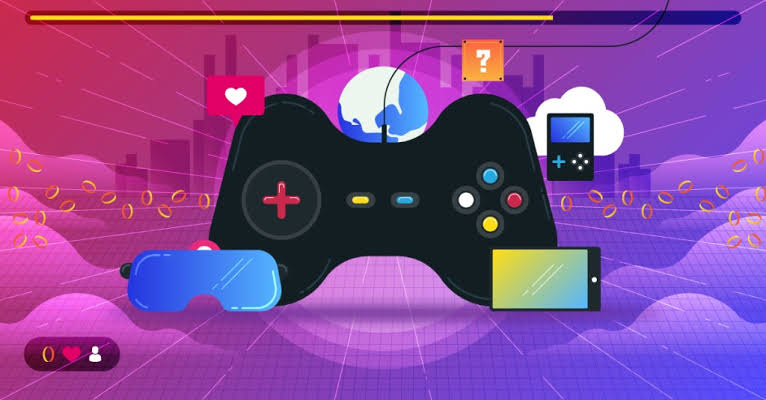As of July 2025, the gaming console industry stands at a major technological crossroads. Rapid advances in hardware, artificial intelligence, cloud infrastructure, and immersive experiences are reshaping the traditional definition of a “console.” What was once a static box under the television is evolving into a dynamic hub of cross-platform play, hyper-realistic graphics, intelligent systems, and portable innovation. The future of gaming consoles is not just about better graphics or faster load times—it’s about how they integrate into our lives, connect players globally, and push the boundaries of interactive entertainment.
More Power, Less Bulk
Gaming consoles are becoming more powerful while shedding unnecessary bulk. The latest hardware from major players like Sony, Microsoft, and Nintendo is pushing toward ultra-efficient chipsets based on custom AMD and ARM architectures. Expect consoles to deliver:
- Native 8K gaming capabilities
- Up to 240Hz frame rates
- Real-time ray tracing with minimal latency
- Solid-state storage with near-instant load times
As miniaturization and energy-efficient cooling systems improve, consoles are also becoming quieter and more compact. This is crucial as living spaces become more minimal and mobile setups more common among users.
Seamless Integration with Cloud Gaming
Cloud gaming is no longer an optional add-on—it is quickly becoming central to the gaming console experience. Platforms like Xbox Cloud Gaming (formerly xCloud), PlayStation Cloud, and NVIDIA GeForce NOW are integrating with consoles to offer on-demand gaming without full game downloads.
Future consoles will likely:
- Offer hybrid gaming, blending cloud processing with local hardware rendering
- Eliminate the need for physical discs and downloads
- Allow instant access to vast libraries of AAA and indie titles
- Support cloud-based save states, enabling players to resume from any device
This shift empowers gamers to start a session on their console, continue on their smartphone, and pick up again on a tablet—creating a truly uninterrupted cross-device gaming experience.
AI-Powered Game Enhancement
Artificial intelligence is playing an increasingly central role in the development and enhancement of console gaming. In 2025 and beyond, expect to see:
- AI-generated game worlds that adapt to player decisions
- NPCs (non-player characters) with realistic behavior and emotion detection
- Dynamic difficulty adjustments tailored to player skill and reaction time
- Real-time voice interaction through advanced speech recognition
This level of personalization and realism makes each gaming experience feel unique and responsive, moving closer to truly living game environments.
Enhanced Haptics and Sensory Feedback
The future of gaming consoles isn’t just visual—it’s tactile. Advanced haptic feedback systems are evolving far beyond vibration motors. New controller technologies now simulate sensations like tension, impact, texture, and resistance.
Features already appearing in next-gen controllers include:
- Adaptive triggers that replicate tension in pulling a bow or firing a weapon
- Precision haptics to mimic environmental feedback (like walking on gravel vs. sand)
- Temperature modulation to simulate heat or cold environments (experimental tech)
These sensory improvements create deeper immersion and a more emotional connection to gameplay.
Mixed Reality and AR Gaming
Augmented reality (AR) and mixed reality (MR) are entering the console space. With camera-equipped devices and spatial computing software, console gaming is moving off the screen and into the real world.
Advancements include:
- AR overlays through connected smart glasses or camera-driven environments
- MR multiplayer experiences, where players can interact with virtual elements in their living room
- Object recognition, allowing real-world surfaces to become game terrain
While still emerging, this technology hints at a future where consoles are not just entertainment centers but portals into enhanced physical reality.
Universal Backward Compatibility and Emulation
Gamers value their libraries, and console developers are responding with deeper backward compatibility. Modern consoles are now able to emulate multiple generations of software, ensuring that old favorites don’t get lost with new releases.
In the next few years, expect:
- AI-enhanced remastering of older games with better frame rates and graphics
- Universal emulation of past console libraries across generations
- Unified digital storefronts where all previous-gen games are accessible
This move not only preserves gaming history but also increases value for users who have built digital collections over time.
Cross-Platform and Cross-Generational Play
The walls between platforms are coming down. Cross-play is no longer a novelty—it’s becoming a norm. Future consoles will focus on:
- Shared game ecosystems across Xbox, PlayStation, PC, and mobile
- Cross-generational multiplayer, where players on different versions can play together
- Unified social gaming networks, letting friends connect regardless of hardware
This trend empowers gamers to focus on people and play rather than being restricted by platform or device generation.
Eco-Conscious Console Design
Sustainability is becoming a major consideration in console production. Manufacturers are looking to reduce the environmental impact of console development and usage.
Expect upcoming consoles to feature:
- Energy-saving modes and efficient standby systems
- Modular upgrade options to extend hardware life without full replacement
- Recycled materials in casing and packaging
- Repair-friendly designs to reduce electronic waste
As gamers become more environmentally conscious, eco-friendly innovations could become a differentiator in the market.
Subscription-Driven Gaming Ecosystems
The future of gaming consoles also leans heavily into subscription-based models. Services like Xbox Game Pass, PlayStation Plus, and Nintendo Switch Online are evolving into full content ecosystems.
Players can expect:
- Day-one access to new releases
- Exclusive content and early access perks
- Cross-platform cloud saves and synchronized game states
- Family-sharing and parental control enhancements
This model offers value, convenience, and a consistent revenue stream for developers, changing how games are bought, played, and distributed.
Conclusion
Gaming consoles in 2025 are evolving beyond boxes with controllers into intelligent, immersive, and fully connected entertainment platforms. Whether you’re interested in high-performance hardware, cloud-based gaming, AI-enhanced gameplay, or eco-conscious innovation, the future is full of potential.
The line between console, PC, and mobile gaming is blurring, with consoles at the heart of this transformation. What remains constant, however, is the core spirit of gaming: connection, creativity, and joy. As the technology continues to progress, the next generation of consoles will offer more than just games—they’ll offer experiences that redefine what it means to play.



